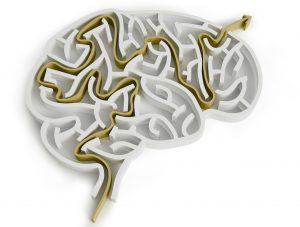Seeking Connection by Bonnie Badenoch, Ph.D.
 Yesterday, as I did some shopping for the holidays, I saw an older couple strolling through Fred Meyer, hand in hand. When they paused to look at something, their bodies leaned slightly into one another, and the warm energy between them was palpable in the air. I could feel my body relax and a deep smile crinkle my eyes as I participated in the quiet radiance of their attachment. In my decades as a therapist, the deepest and most consistent pain for the people I am privileged to see comes from disconnection. Since neurobiology teaches us that, from birth into old age, our most basic, hard-wired quest is for attuned relationships, why do so many of us struggle to find the warmth and nurturance our brains and bodies crave?
Yesterday, as I did some shopping for the holidays, I saw an older couple strolling through Fred Meyer, hand in hand. When they paused to look at something, their bodies leaned slightly into one another, and the warm energy between them was palpable in the air. I could feel my body relax and a deep smile crinkle my eyes as I participated in the quiet radiance of their attachment. In my decades as a therapist, the deepest and most consistent pain for the people I am privileged to see comes from disconnection. Since neurobiology teaches us that, from birth into old age, our most basic, hard-wired quest is for attuned relationships, why do so many of us struggle to find the warmth and nurturance our brains and bodies crave?
The answer seems to lie deep in the limbic circuits of our brains where the patterns of earliest childhood live. Nestled between the outer layer of the folded neocortex and the survival-protecting brainstem, these nests of neurons take in the relational patterns we experienced with our parents. At birth, the relational parts of our brains are a sea of neurons, awaiting connection through relationship. Then, the way our parents are able to attune with us or not creates the template of how we expect relationships to be. If our parents were disconnected from their emotions, they literally structured our brains to ignore the upwelling signals from our bodies that tell us how we feel. Unless these patterns are altered later on, when we seek an adult relationship, without our awareness or permission, these templates will guide our choice and produce a relationship as unsatisfying as those in childhood. If our parents struggled unsuccessfully to contain chaotic emotions, we learn deeply that chaos is part of love, and find ourselves drawn toward people who will participate with us in ongoing upset.
For a long time, neuroscientists believed that these implicit patterns were indelible, unchanging after the earliest days of childhood. However, in the last 20 years, we have discovered that our brains are constantly rewiring. This phenomenon is known as neuroplasticity, and it means that we are never stuck with the relational templates of childhood. The best news is that attuned, empathic relationships are most efficient at rewiring these circuits. In early childhood, if our parents are able to attune with us, then we form patterns that lead us to expect warm connection. In adulthood, if we bring our vulnerable self to another person who is able to provide attunement, we can gradually change the old wiring into the new pattern that becomes a deep and powerfully attracting expectation of warm connection. The beauty of this transformation is that we become more able not only to receive nurturance, but give it to others as well.
Our contribution to this change is a willingness to connect with our own inner world. Once we become aware that we are not content with our relational choices, we can begin to notice the patterns that drive them. Implicit memories always show up as patterns – as ways that our bodies automatically move in response to offers of relationship, sensations that arise in our bodies, emotions that tell us whether to connect or flee, and perceptions of how relationships work. Right now, try remembering what it’s like to walk into a room full of strangers at a social event. Notice what happens in your body as you picture that – does your stomach or chest tighten? do you feel tension in your legs like they want to run? does your body automatically relax into a feeling of openness and receptivity? These automatic body responses are how implicit memories show up. Now, remember a moment in your current most significant relationship – romantic partner, close friend, child, parent. Notice how your body responds to this person’s presence under different circumstances. As I think of my daughter, I immediately feel warm expansion in my chest, the core of my attachment to her. But I also notice my stomach tighten as I am aware of her struggles in this difficult economy. My body reflects my relational, danger-sensing limbic system lighting up with concern for her, side by side with the relaxed connection. Becoming caring observers of ourselves – connecting to our deeper mind – opens the doorway for us to share ourselves with another, whether that is a close personal person or a therapist. When we feel received by another in our distress, our brains literally rewire into new patterns of expectation. The neurobiological magic of attuned interpersonal connection!
I am fortunate to see this miracle unfold day after day. One of the older women I met with had lived in complete social isolation since high school, a reality that told more than words about her inner world. She accepted it as the natural outcome of her busy work life, but also experienced a hollow, suicidal feeling far too often. As we began to work our way back into her implicit world, she gained a visceral sense of how the family chaos had meant that her needs were unimportant, while leading her to fear connections with the outside world. She noticed that her body “shrank up” whenever she thought about attending a social gathering. At first, it was difficult for her to have compassion for her suffering as a child, but over time, as we slowly and carefully touched her experience together, we became a tender embrace for not only her childhood, but for the painful experiences her parents had endured as children. As she understood at a bodily level the depth of the family tragedy, her implicit world also began to reform around the warmth in our relationship. I’m happy to report that when she retired and moved to a new community, her social world blossomed in ways that startled her. Such is the power of our implicit patterns!
Bonnie Badenoch, Ph.D., LMFT is the co-founder of Center for Brain-Wise Living, a nonprofit organization dedicated to fostering awareness of the brain, mind, and relationships in the service of creating a more awake and compassionate world. She is the author of Being a Brain-Wise Therapist: A Practical Guide to Interpersonal Neurobiology (W. W. Norton, 2008). Her website is www.brainwisetherapist.org. She also works with the Global Association for Interpersonal Neurobiology Studies (GAINS). www.mindgains.org.









Hi, my name is Sharon Baty. I received your name and contact information from Southwestern College in Santa Fe. I am a doctoral candidate, awaiting IRB approval to conduct a qualitative study evaluating the role of spirituality in posttraumatic growth of female childhood sexual abuse survivors.
In addition, I just started a non-profit called WomenSPEAK Foundation Inc., in which the primary mission is to educate the public on the psychological and physiological effects of physical and sexual violence on victims. Our prior focus is to educate on how trauma is stored in the physiology and offer referral to alternative practitioners trained in treating trauma(e.g., acupuncturists, deep tissue massage therapists, Reiki practitioners, EMDR and Art therapists, Yoga instructors).
Our services will include
EDUCATION-We will educate the community, survivors of violence and their families on the psychological and physiological effects of both physical and sexual violence-through outreach presentations, in office support groups and educational classes. Classes/presentations and support groups.
REFERRAL-We will provide a referral service to survivors of violence, matching them with the appropriate non-traditional practitioner (e.g., deep tissue massage therapists, acupuncturists, EMDR and art therapists, religious counselors, Reiki practitioners) based on client needs (Our objective is to locate the least-restrictive alternative to support individuals in their anticipated recovery from their trauma).
ADVOCACY-On a case by case basis, clients will be assigned an advocate who can accompany clients to court.
DATA COLLECTION- The data collection process will be on-going as we plan to continuously address the needs of the target population. Our target start up date is January 1, 2012 and we will serve our community indefinitely.
I would love to schedule a time to meet with you and speak with you more about your work. Please give me a call or email very soon. Thank you.
Sharon
Sharon D. Baty, ABD, MA, BA
President
WomenSPEAK Foundation Inc.
P.O Box 35295
Albuquerque, NM 87176
cell 505-504-6477
office: 1-888-990-1699
Good article – nice examples given.
Good
I want to join
I am looking for connection